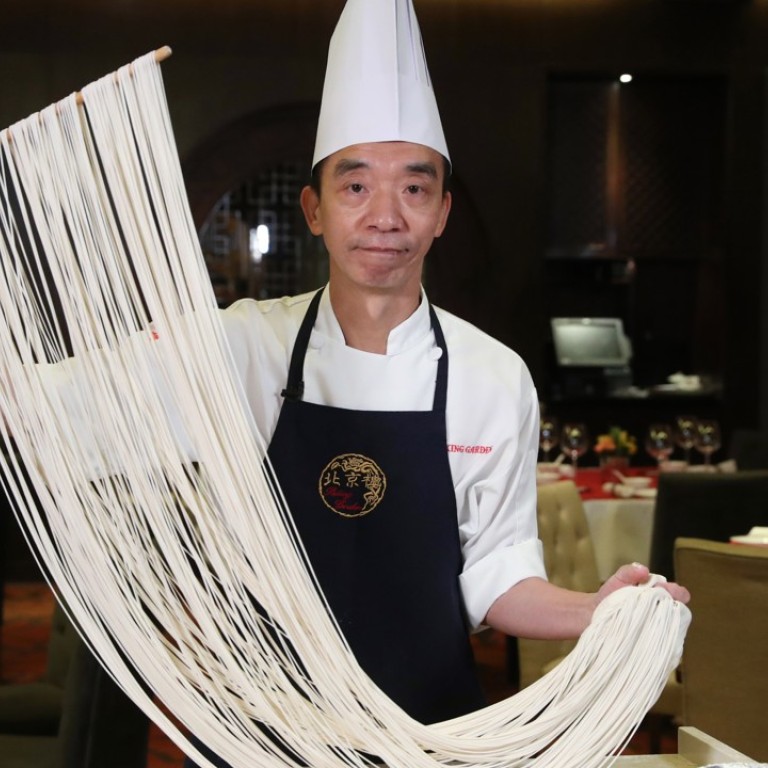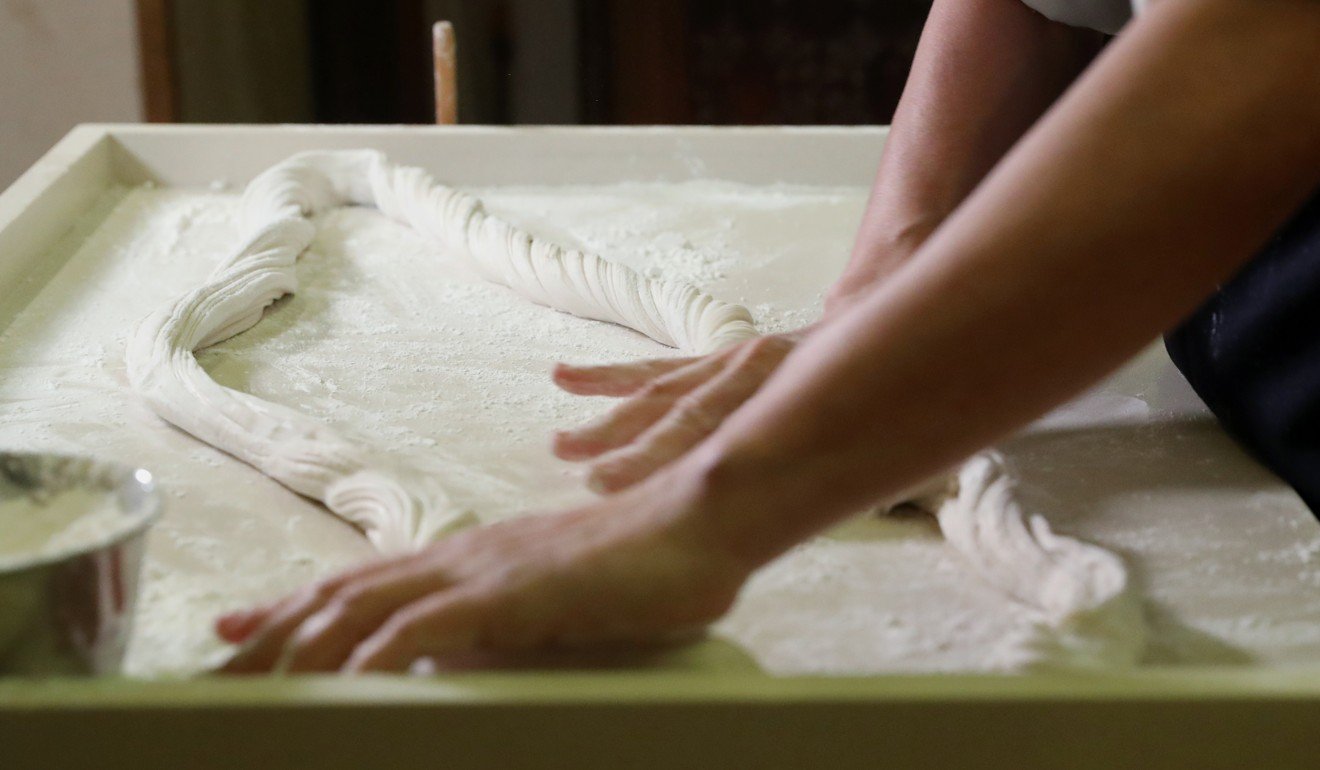
How to make Chinese hand-pulled noodles – Hong Kong chef shows his masterful technique
Peking Garden’s head dim sum chef shows off his memorising noodle-making skills, as he transforms a lump of dough into delicate strands by hand. Reporter Bernice Chan gives it a try, with interesting results
Every night at 8.30pm at Hong Kong’s Peking Garden it’s showtime.
A chef emerges from the restaurant’s kitchen with a trolley and starts handling dough. He bangs it hard on the surface a few times to make it more pliable before twisting it. Then he throws some flour on the trolley’s surface and quickly stretches the dough. He folds and pulls the dough that soon becomes two strands, four strands, then eight, 16, 32 ….
Less than two minutes later the chef has magically created thin strands of noodles from the large piece of dough.
How does he do it?
I enlist the help of Leung Chi-cheung, head dim sum chef at the restaurant in Alexandra House, in the city’s Central business district, to teach me this magic trick.

And like a magician, making these noodles requires deftness and skill. He has over 30 years’ experience in the kitchen, 25 of which are at Peking Garden, so he’s an old hand. But can he teach an amateur?
I was about to find out.
How to make char siu bao (not a BBQ pork volcano)
Leung gave me a piece of the dough and it was quite sticky. I tried to follow him, banging the dough on the table and stretching it at the same time. Then he instructs me to take the end of the dough in my right hand and cross it over the left side. From there, I stretch the dough and repeat.
This technique, Leung explains, helps to even out the dough.

He then twists the two ends together and lengthens it – a step he repeats a few more times. This step is deemed too difficult (or too advanced) for me, and Leung takes over.
Now it’s time to make the actual strands.

I hold the ends of the dough between my fingers, and start the complex process of folding, pulling and twisting the dough until the strands start to become thin.
World champion pizzaiolo creates a char siu Hong Kong special
In my hands, the dough feels elastic, but Leung becomes agitated. Even though I’ve finally got the gist of the motions, I am doing it too slowly – the dough is starting to dry out. Sure enough, the strands started to break.
Game over.
The faster one handles the dough, the longer and thinner the noodle strands can be. Lesson learned.

Afterwards, we get to dig into a bowl of Zhejiang noodles – a summer dish of the hand-pulled noodles with a pork sauce topped with shredded cucumber and pink radish.
The noodles are a bit thick in texture, but definitely handmade. We appreciate each bite, thanks to the skill of Leung’s hands – not mine!
Peking Garden, Shop B1, Basement 1, Alexandra House, 16-20 Chater Road, Central. Tel: 2526 6456

